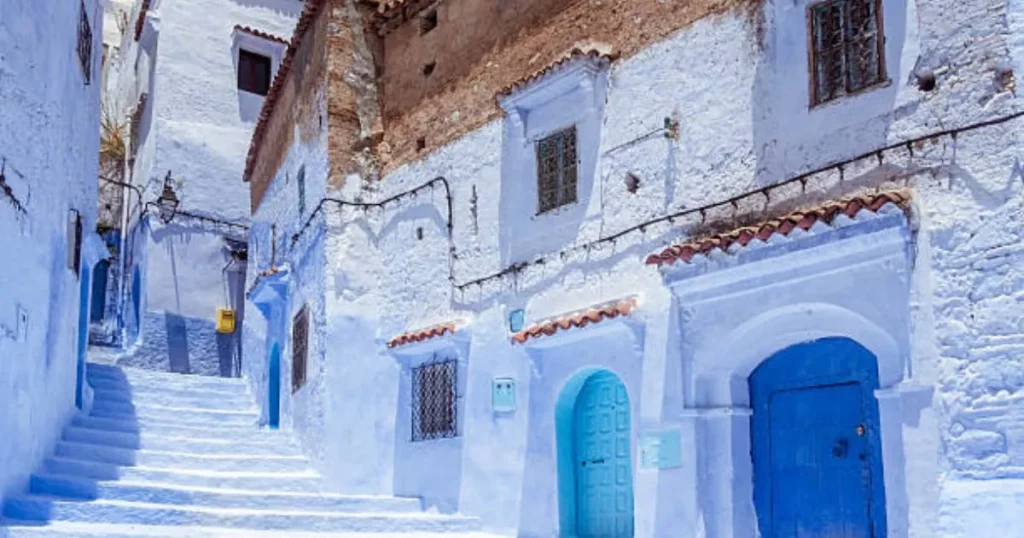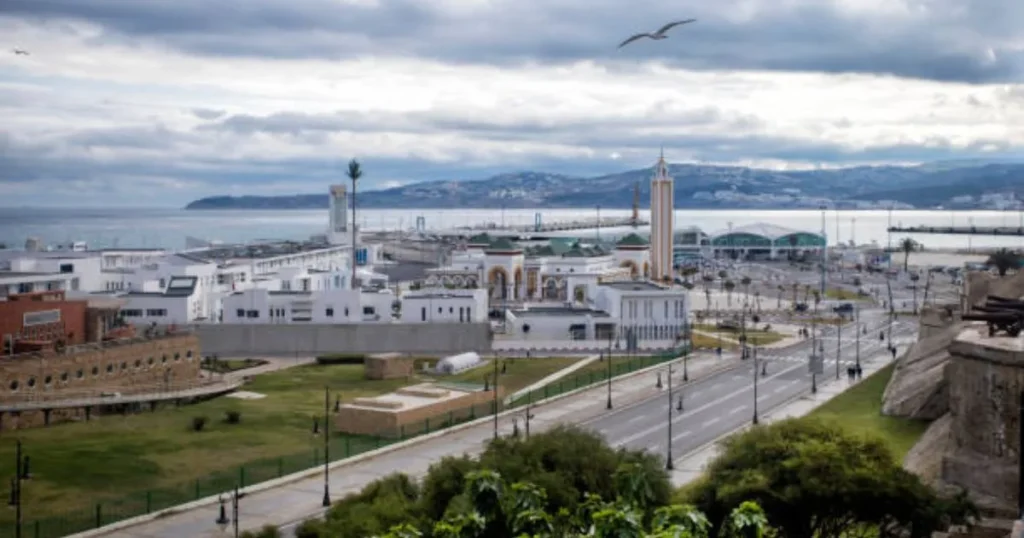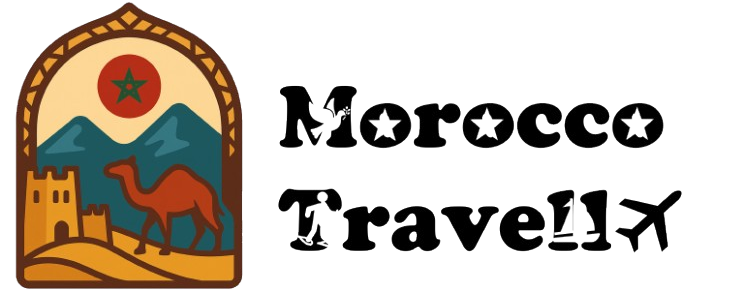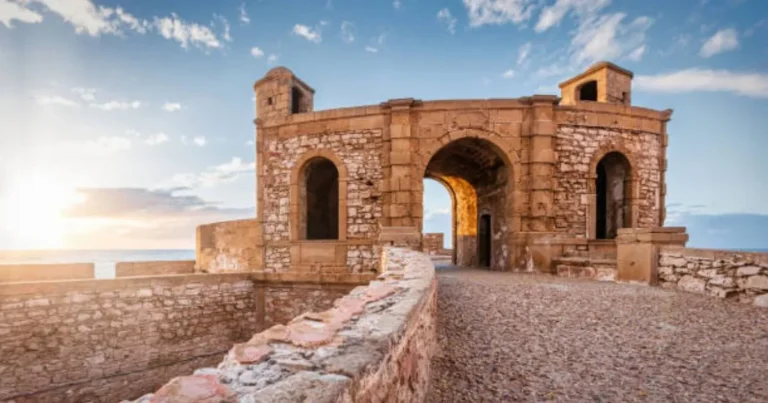Why Tangier Is Morocco’s Most Alluring City
As you step into Tangier, Morocco, you’re immediately enveloped in a world where the Mediterranean meets the Atlantic, and the vibrant cultures of Africa, Europe, and the Middle East blend seamlessly. This enchanting city, perched on the northwest tip of Africa, is a treasure trove of history, art, and architecture.
You’ll discover that Tangier’s allure lies in its eclectic mix of old and new, from the labyrinthine medina to the modern art galleries and cafes that line its boulevards. The city’s unique charm is further enhanced by its stunning natural beauty, with the sea air and panoramic views of the Strait of Gibraltar adding to its allure.
Table of Contents
The Mystique of Tangier: A Gateway Between Continents
Tangier, a city of enchanting beauty, has long been a crossroads between continents, cultures, and histories. This captivating city is nestled at the northwestern tip of Morocco, where the Mediterranean Sea meets the Atlantic Ocean, creating a unique blend of influences that have shaped its identity.
A Brief History of Cultural Crossroads
Tangier’s history is a rich tapestry woven from the threads of various cultures. From its early days as a Phoenician trading post to its current status as a thriving Moroccan city, Tangier has been a place of significant cultural exchange.
The International Zone Era
One of the most fascinating periods in Tangier’s history was the International Zone era, when the city was under the administration of several European powers. This era brought a cosmopolitan flair to the city, making it a haven for artists, writers, and intellectuals. As Paul Bowles, a famous American writer, once noted, “Tangier is a city that has a way of getting under your skin.”
Modern Tangier’s Renaissance
In recent years, Tangier has undergone significant development, blending its rich heritage with modern infrastructure. This renaissance has transformed the city into a vibrant destination, attracting visitors from around the world.
The Unique Geographic Position
Tangier’s strategic location makes it a crucial gateway between Europe and Africa. The city’s harbor is an important hub for trade and commerce, while its proximity to Spain has made it a popular destination for travelers.
Where the Mediterranean Meets the Atlantic
The confluence of the Mediterranean Sea and the Atlantic Ocean gives Tangier its unique character. The city’s coastline offers breathtaking views, with the rugged landscape adding to its natural beauty. Visitors can enjoy the tangy sea air while exploring the city’s many wonders.
Planning Your Journey to Tangier
Before you embark on your adventure to Tangier, it’s crucial to know the best time to go and what to expect. Tangier, Morocco, is a city that seamlessly blends traditional and modern, offering a unique experience for travelers.
Best Time to Visit
Tangier enjoys a Mediterranean climate, characterized by mild winters and warm summers. The best time to visit is during spring (March to May) and autumn (September to November), when the weather is pleasant and ideal for exploring the city’s historic sites and enjoying its vibrant culture.
Seasonal Considerations
Summer can be quite warm, with temperatures often reaching the mid-30s Celsius, while winters are generally mild, making it a good time for those who prefer cooler weather. However, some attractions might have limited hours during the off-season.
Festival Calendar
Tangier hosts various cultural festivals throughout the year, including the Tangier International Film Festival and the Mawazine Festival, which, although held in Rabat, can impact travel in the region. Planning your visit around these events can enhance your experience.
Visa Requirements for UK Travelers
For UK travelers, Morocco offers a relatively straightforward visa process. Currently, UK citizens can enter Morocco without a visa for stays up to 90 days within a 180-day period.
Currency and Budget Considerations
The local currency is the Moroccan dirham (MAD). While euros and US dollars are sometimes accepted, having local currency is advisable. Budgeting for your trip involves considering accommodation, food, and activities.
Daily Cost Breakdown
A daily budget of around 500-700 MAD (approximately £40-£60) per person can cover meals, local transport, and entry fees to attractions, though this can vary based on your travel style and preferences.
How to Reach Tangier: Transportation Options
With its strategic location at the crossroads of Africa and Europe, this enchanting city is easily reachable by air, sea, and land. You have multiple options to choose from, depending on your starting location and preferred mode of travel.
Flying to Ibn Battouta Airport
Ibn Battouta Airport is a modern facility that serves as the primary gateway to Tangier. It’s well-connected to major European cities, making it a convenient option for international travelers.
Direct Flights from the UK
Several airlines operate direct flights from the UK, providing a quick and hassle-free journey. Flight times typically range from 3 to 4 hours.
Ferry Connections from Spain
If you prefer to travel by sea, ferry services from Spain offer a scenic and relatively relaxed journey. The most popular route is from Tarifa.
Tarifa to Tangier Route
The Tarifa ferry route is a favorite among travelers, with frequent sailings throughout the day. The journey takes approximately one hour.
Train Travel within Morocco
Once you arrive in Morocco, train travel is an efficient way to reach Tangier from other major cities. The Moroccan rail network is well-developed.
The High-Speed Al Boraq Service
The Al Boraq high-speed train service connects Tangier to Casablanca and other key cities, offering a fast and comfortable ride.
Where to Stay: Accommodation Guide
From luxury riads to budget-friendly hostels, Tangier has a wide variety of places to stay, each offering a unique experience. Whether you’re looking to immerse yourself in the historic Medina or enjoy modern amenities, Tangier’s accommodation options cater to all tastes and budgets.
Luxury Riads in the Medina
The Medina of Tangier is home to some of the most luxurious riads, offering a blend of traditional charm and modern luxury. These riads are perfect for those seeking an authentic Tangier experience.
Top-Rated Heritage Properties
Some of the top-rated heritage properties include beautifully restored traditional riads with intricate tile work and tranquil courtyards.
Mid-Range Hotels with Ocean Views
For those looking for a more affordable luxury experience, mid-range hotels with ocean views are an excellent choice, offering stunning vistas of the Mediterranean.
Budget-Friendly Options
Hostels and Guesthouses
Tangier also offers a range of budget-friendly hostels and guesthouses, ideal for travelers on a tight budget. These options provide a great way to meet fellow travelers and experience the local culture.
Navigating Tangier Like a Local: Transportation Tips
As you explore Tangier, understanding the local transportation system is key to unlocking the city’s hidden gems. Tangier, with its unique blend of cultures and geography, offers a variety of transportation options that cater to different preferences and budgets.
Getting Around the City
Tangier’s city transportation is diverse, ranging from taxis to buses. For most travelers, taxis are the most convenient way to get around.
Petit Taxis vs. Grand Taxis
Petit Taxis are metered and operate within the city limits, making them ideal for short trips. On the other hand, Grand Taxis are larger vehicles that can be hired for longer journeys or for traveling to nearby cities. They often operate on a shared basis, making them a cost-effective option for groups.
When using petit taxis, ensure the meter is turned on at the start of your journey to avoid any disputes over fares. For grand taxis, agree on the fare before you begin your trip.
Bus Routes Worth Knowing
Tangier has an efficient bus system that covers most areas of the city. The ALSA bus company operates both within the city and to other major cities in Morocco. For tourists, the most useful bus routes are those that connect the city center with the outskirts and nearby attractions.
- Bus number 1: Connects the city center to the port area.
- Bus number 2: Goes through the medina and surrounding areas.
- Bus number 17: Heads towards the Caves of Hercules, a popular day-trip destination.
Walking Routes and Shortcuts
Walking is one of the best ways to explore Tangier, especially within the medina. The compact nature of the old city makes it easy to navigate on foot. Key walking routes include:
- The Grand Socco to the Kasbah route, which offers stunning views of the city.
- The path along the beachfront, ideal for a leisurely stroll.
Be sure to explore the alleys and side streets, where you’ll discover unique shops and local eateries.
Hiring Drivers for Day Trips
For day trips to nearby attractions like Chefchaouen or Asilah, hiring a driver can be a convenient option. It allows you to enjoy the scenery without the hassle of navigating unfamiliar roads.
When hiring a driver, agree on the itinerary and costs in advance. A typical day trip might include visits to historical sites, beaches, or other local attractions. Ensure you have a clear understanding of what’s included in the price and any additional costs.
Exploring the Labyrinthine Medina of Tangier
The heart of Tangier’s old city, the Medina, is a fascinating blend of Moroccan and international influences. As you wander through its narrow alleys, you’ll discover a world of vibrant colors, rich history, and cultural heritage.
Essential Landmarks and Meeting Points
The Medina is home to several iconic landmarks that serve as perfect meeting points for travelers. Two of the most notable are the Grand Socco and Petit Socco.
The Grand Socco
The Grand Socco, also known as the “Grand Market,” is a bustling square that marks the entrance to the Medina. It’s a great place to start your exploration, with its lively atmosphere and array of street food vendors.
Petit Socco
Located in the heart of the Medina, Petit Socco is a smaller, more intimate square surrounded by cafes, shops, and historic buildings. It’s a great spot to relax and take in the local culture.
| Landmark | Description | Best Time to Visit |
|---|---|---|
| Grand Socco | Bustling market square | Morning |
| Petit Socco | Intimate square with cafes and shops | Afternoon |
Tips for Not Getting Lost
Navigating the Medina can be challenging, but with a few tips, you’ll be able to find your way around with ease. First, make sure to carry a map or use a GPS device. Second, be aware of your surroundings and take note of landmarks. Finally, don’t be afraid to ask locals for directions.
Hiring Local Guides: Pros and Cons
Hiring a local guide can be a great way to explore the Medina, as they can provide valuable insights into the history and culture of the area. However, it’s essential to weigh the pros and cons before making a decision.
How to Find Reputable Guides
To find a reputable guide, ask for recommendations from your hotel or other travelers. You can also check online reviews or contact local tour operators. Make sure to agree on the terms and conditions before hiring a guide.
- Research local guides online
- Ask for recommendations
- Agree on terms and conditions
By following these tips, you’ll be able to navigate the Medina with confidence and make the most of your time in Tangier, Morocco.
Must-Visit Historical Sites in Tangier
With its unique blend of cultures, Tangier boasts an array of historical sites worth visiting. As you explore this fascinating city, you’ll discover landmarks that reflect its rich history and strategic importance.
The Kasbah and Dar el Makhzen Museum
The Kasbah, a historic fortress, houses the Dar el Makhzen Museum, which showcases the city’s history and cultural heritage. The museum features an impressive collection of artifacts, including antique furniture, ceramics, and artwork.
Visiting Hours and Ticket Information
The Dar el Makhzen Museum is open from 9:00 AM to 1:00 PM and from 3:00 PM to 6:00 PM. Tickets cost approximately 20 MAD.
The American Legation Museum
This museum is a significant historical landmark, being the first American public building outside the United States. It now serves as a museum, highlighting the historical ties between the U.S. and Morocco.
St. Andrew’s Church
St. Andrew’s Church is an Anglican church that stands out for its beautiful architecture and tranquil atmosphere. It’s a peaceful oasis in the heart of the city.
The Caves of Hercules
Located just outside Tangier, the Caves of Hercules are a natural wonder with a rich mythological history. According to legend, Hercules rested here during his twelve labors.
Transportation Options to the Caves
You can reach the Caves of Hercules by taxi or by joining a guided tour. The journey takes approximately 30 minutes.
| Historical Site | Location | Opening Hours |
|---|---|---|
| The Kasbah and Dar el Makhzen Museum | Kasbah, Tangier | 9:00 AM – 1:00 PM, 3:00 PM – 6:00 PM |
| The American Legation Museum | 9 Rue d’Angleterre, Tangier | 10:00 AM – 1:00 PM, 3:00 PM – 5:00 PM |
| St. Andrew’s Church | 42 Rue d’Angleterre, Tangier | 9:00 AM – 12:00 PM, 3:00 PM – 5:00 PM |
| The Caves of Hercules | Route de la Corniche, Tangier | 9:00 AM – 6:00 PM |
Following the Footsteps of Literary Legends
As you wander through the vibrant streets of Tangier, you’ll discover that this city has been a muse for many literary legends. The city’s unique cultural blend and fascinating history have inspired a multitude of writers and artists.
The Beat Generation’s Tangier
Tangier was a haven for the Beat Generation, a group of American writers who sought inspiration in its exotic and liberating atmosphere. The city’s influence on their work is evident in the numerous literary masterpieces that were conceived within its walls.
Paul Bowles and William Burroughs’ Haunts
You’ll find that many of the city’s cafes and landmarks were frequented by famous authors like Paul Bowles and William Burroughs. Their favorite haunts include:
- The iconic Café Central, where they would often gather to discuss their work.
- The Marshan neighborhood, known for its bohemian vibe and inspiring views.
Café Culture and Creative Haunts
Tangier’s café culture is an integral part of its literary heritage. Writers and artists have long been drawn to the city’s cafes, where they can enjoy a cup of mint tea while soaking up the atmosphere.
Café Hafa and Its Famous Visitors
Café Hafa is one such legendary spot that has hosted numerous famous visitors, including:
- Paul Bowles, who often spent his afternoons there, sipping tea and working on his novels.
- William S. Burroughs, who was known to frequent the café, engaging in deep conversations with fellow writers.
Literary Walking Tours
To fully immerse yourself in Tangier’s literary scene, consider joining a literary walking tour. These guided tours will take you through the city’s historic medina, pointing out significant landmarks and sharing stories about the authors who once called Tangier home.
Culinary Adventures: Tasting Tangier’s Unique Flavors
The culinary landscape of Tangier is a vibrant tapestry woven from the threads of its rich history and cultural diversity. As you explore this enchanting city, you’ll discover a world of flavors that blend traditional Moroccan cuisine with European and Mediterranean influences.
Traditional Tangia and Local Specialties
Tangia, a traditional Moroccan stew, is a must-try when visiting Tangier. Made with tender meat, aromatic spices, and slow-cooked to perfection, Tangia is a hearty dish that reflects the city’s culinary heritage.
Where to Find Authentic Tangia
For an authentic Tangia experience, head to local eateries like Restaurant La Kasbah or Café de France, where this traditional dish is cooked to perfection.
Seafood Restaurants Along the Harbor
Tangier’s coastal location makes it a paradise for seafood lovers. The harbor is lined with restaurants serving the freshest catch of the day, from succulent fish to mouth-watering seafood paella.
Fresh Catch Recommendations
- Restaurant Al Medina for their grilled fish
- La Cambuse for a variety of seafood dishes
Mint Tea Etiquette and Sweet Treats
No visit to Tangier is complete without experiencing the traditional mint tea ceremony. This refreshing beverage is an integral part of Moroccan culture, often served with sweet pastries that are as delicious as they are visually appealing.
Pastry Shops Worth Visiting
For a taste of Tangier’s sweet side, visit Patisserie La Maison Arabe or Café Tingis, where you can indulge in traditional Moroccan pastries like baklava and makroud.
Shopping in Tangier: From Souks to Boutiques
As you wander through Tangier, you’ll discover a world of vibrant markets and unique boutiques. The city’s shopping scene is a reflection of its rich cultural heritage, blending traditional crafts with modern retail.
Navigating the Grand Socco Market
The Grand Socco Market is a must-visit destination for any shopper in Tangier. This bustling marketplace offers a wide range of goods, from fresh produce to handicrafts.
Best Days to Visit
The best days to visit the Grand Socco Market are Thursday and Sunday, when the market is at its most vibrant. Be prepared for a sensory overload, with vendors calling out their daily specials and the aroma of local cuisine filling the air.


Artisanal Crafts and Souvenirs
Tangier is renowned for its artisanal crafts, including textiles, pottery, and jewelry. When shopping for souvenirs, it’s essential to distinguish between authentic, locally made items and those produced for tourists.
Authentic vs. Tourist Items
Authentic artisanal crafts are often characterized by their unique designs and high-quality materials. Be wary of very cheap or mass-produced items, as they are likely to be made for tourists.
Bargaining Tips and Etiquette
Bargaining is an integral part of shopping in Tangier’s markets. Start by offering a lower price than you’re willing to pay, and be prepared to negotiate.
Price Expectations
Prices can vary significantly depending on the item and the vendor. As a general rule, you can expect to pay between 20-50 MAD (2-5 USD) for small items like souvenirs, while larger or more intricate pieces can cost upwards of 1000 MAD (100 USD).
| Item | Average Price (MAD) | Average Price (USD) |
|---|---|---|
| Handmade Textiles | 200-500 | 20-50 |
| Pottery | 100-300 | 10-30 |
| Jewelry | 50-1000 | 5-100 |
Day Trips from Tangier Worth Taking
If you’re looking to venture beyond Tangier, you’ll discover a wealth of exciting experiences in the nearby towns and natural wonders. The region offers a diverse array of day trip options, each with its unique charm and attractions.
Chefchaouen: The Blue Pearl
Chefchaouen, known for its blue-painted buildings, is a picturesque town nestled in the Rif Mountains. It’s a haven for those seeking tranquility and breathtaking views.
Transportation Options and Travel Time
You can reach Chefchaouen by bus or private car, with the journey taking approximately 3 hours. Regular bus services are available from Tangier’s bus station.
Asilah’s Whitewashed Walls
Asilah is a charming coastal town known for its whitewashed houses, vibrant arts scene, and historic fortifications. The town comes alive during its annual arts festival.
Best Time to Visit for the Arts Festival
The Asilah Arts Festival typically takes place in August, attracting artists and visitors from around the world. It’s a great time to experience the town’s culture and creativity.
Cap Spartel and the Atlantic Coast
Cap Spartel, located at the northwestern tip of Africa, offers stunning views of the Atlantic Ocean and the Mediterranean Sea. It’s a great spot to watch the sunset.
Combining with the Caves of Hercules
You can combine a visit to Cap Spartel with a trip to the nearby Caves of Hercules, a natural wonder with a rich mythological history. This makes for a fulfilling day trip, exploring both natural beauty and historical significance.
These day trips from Tangier offer a mix of culture, history, and natural beauty, enhancing your travel experience in Morocco.
Conclusion: Embracing the Timeless Charm of Tangier
As you explore the winding streets and vibrant markets of Tangier, Morocco, you’ll discover a city that seamlessly blends tradition and modernity. With its rich history, stunning landscapes, and warm hospitality, Tangier is a destination that will captivate your senses and leave you enchanted.
From the majestic Kasbah to the serene beaches, Tangier offers a diverse range of experiences that cater to all interests. Whether you’re a history buff, a foodie, or an adventure-seeker, this captivating city has something for everyone. As you wander through the labyrinthine Medina, you’ll uncover hidden gems and unexpected delights that will make your journey truly unforgettable.
Tangier, Morocco, is a city that will leave you with lasting memories. With its unique blend of cultures, breathtaking scenery, and warm welcome, it’s a destination that will beckon you to return. So, pack your bags, immerse yourself in the magic of Tangier, and discover why this enchanting city has captivated travelers for centuries.



One Comment